Imagine navigating through a data-rich landscape armed with precision tools finely tuned for optimal performance. From survey software with built-in data validation to GPS tracking for real-time location insights, each tool serves as a vital cog in the machinery of effective data collection field services. As you explore the top 10 essential tools for data collection field services, you’ll uncover how these instruments seamlessly integrate to elevate your data collection endeavors to unparalleled heights, ensuring streamlined processes and enhanced outcomes.
Survey Software
When it comes to conducting efficient data collection field services, having reliable survey software is essential. Survey software plays a crucial role in streamlining the data collection process, ensuring accuracy, and enhancing the overall quality of data collected.
One key benefit of utilizing survey software is the ease of data validation it provides. With built-in validation features, such as required fields and response formats, you can minimize errors and ensure that the data collected is accurate and consistent. Additionally, survey software offers robust data analysis techniques that enable you to derive meaningful insights from the collected data efficiently.
In terms of data privacy, survey software often comes equipped with security measures to protect sensitive information. By utilizing encryption and secure data storage practices, you can ensure that respondent data is kept confidential and secure.
Moreover, survey software simplifies data reporting by offering customizable reporting tools that allow you to present your findings in a clear and visually appealing manner. These features make survey software an indispensable tool for conducting successful data collection field services.
Mobile Data Collection
When it comes to mobile data collection, you can expect efficient data gathering, real-time data capture, and location-based data collection. Mobile tools enable you to collect data swiftly, ensuring that information is captured accurately and promptly. Additionally, the ability to capture data based on specific locations provides valuable context and insights for your field services.
Efficient Data Gathering
To efficiently gather data in the field, utilizing mobile data collection tools is essential. These tools not only aid in time management but also significantly enhance data accuracy. Here are some key ways mobile data collection promotes efficient data gathering:
- Real-time data entry: Mobile devices allow you to input data as you collect it, reducing the need for manual transcription and minimizing errors.
- GPS integration: Geotagging data with GPS coordinates ensures the accuracy of location-based information, saving time on verifying locations later.
- Offline data collection: Being able to collect data without an internet connection ensures you can gather information even in remote areas, enhancing productivity.
- Customizable forms: Tailoring data collection forms to specific needs improves efficiency by focusing only on relevant information.
- Automatic data syncing: Instant synchronization of collected data to a central database prevents data loss and keeps all team members up-to-date in real-time.
With these features, mobile data collection tools streamline the data gathering process, making it more accurate and efficient.
Real-Time Data Capture
Enhancing the efficiency of data collection processes, real-time data capture through mobile data collection tools revolutionizes field data gathering. By enabling immediate input and transmission of data, real-time data capture enhances data accuracy by reducing the risk of human error associated with manual data entry. Additionally, these tools often include built-in data validation features that help ensure the information being collected meets predefined criteria, further enhancing the accuracy of the data being captured.
Real-time data capture allows for instant feedback on the quality of data collected, enabling field workers to address any discrepancies or missing information promptly. This real-time validation process helps maintain the integrity of the data being gathered, reducing the likelihood of errors that could impact the overall data quality. With mobile data collection tools, data can be validated and corrected on the spot, leading to more reliable and accurate datasets for analysis and decision-making.
Location-Based Data Collection
Transitioning from real-time data capture, location-based data collection, also known as mobile data collection, plays a vital role in streamlining field data gathering processes. This method utilizes geospatial mapping and ensures high location accuracy. Here are some key aspects to consider:
- Offline Capabilities: Mobile data collection tools should have the ability to function even in areas with poor network connectivity, enabling you to collect data in remote locations.
- Customizable Forms: The flexibility to create custom forms tailored to specific data collection needs enhances the efficiency and relevance of the collected data.
- Real-Time Updates: Instantaneous data transmission allows for immediate analysis and decision-making based on the most recent information.
- Photo and Video Integration: Integrating multimedia capabilities into the data collection process can provide additional context and visual documentation.
- GPS Tagging: Automatically tagging data with GPS coordinates simplifies data organization and enhances the accuracy of geospatial mapping.
Online Questionnaires
When creating online questionnaires for data collection, it’s essential to consider effective survey design tips to ensure clarity and ease of completion for respondents. Additionally, implementing strategies to boost response rates is crucial for obtaining valuable and sufficient data. By focusing on these key points, you can enhance the quality and quantity of the information gathered through your online questionnaires.
Survey Design Tips
To create effective online questionnaires, it is essential to consider various factors that can impact the quality of data collected. When designing your survey, pay close attention to question wording and survey layout to ensure clarity and ease of completion for respondents.
- Question Wording
- Keep questions clear and concise to avoid confusion.
- Use simple language that is easily understood by all participants.
- Avoid leading or biased questions that may influence responses.
- Survey Layout
- Organize questions logically to guide respondents through the survey.
- Use a clean and visually appealing design to enhance user experience.
Response Rate Strategies
As you focus on maximizing the effectiveness of your online questionnaires, one crucial aspect to consider is implementing strategies to boost response rates. Incentive programs can be a powerful tool to encourage participation. Consider offering rewards such as discounts, gift cards, or exclusive content to motivate respondents. Additionally, response tracking allows you to monitor engagement levels and adjust your approach accordingly. Targeted messaging is another effective strategy to increase response rates. Personalized invitations and reminders tailored to the recipient’s interests can significantly improve participation. Follow-up strategies are key to maintaining respondent interest. Sending polite reminders and thank-you messages can reinforce the importance of their feedback. By combining these tactics, you can enhance the success of your online questionnaires and gather valuable data more efficiently. Remember, the goal is to create a seamless and engaging experience for your respondents to optimize response rates.
Face-to-face Interviews
For effective data collection in the field, utilizing face-to-face interviews can provide valuable insights that may not be captured through other methods. When conducting face-to-face interviews, consider the following:
- Interview Techniques: Utilize open-ended questions to encourage in-depth responses.
- Data Validation: Confirm responses by asking follow-up questions and seeking clarification.
- Data Accuracy: Ensure accurate data by recording responses directly during the interview.
- Field Observations: Take note of non-verbal cues and environmental factors that may impact responses.
- Engagement: Maintain a conversational tone to keep the respondent engaged and willing to share information.
Face-to-face interviews offer a personal touch that can foster trust and rapport with participants, leading to more candid responses. By employing effective interview techniques and being attentive to details during the process, you can gather high-quality data that reflects the true sentiments of the individuals being surveyed.
Telephonic Surveys
Moving from face-to-face interviews to telephonic surveys opens up new avenues for data collection in the field. Remote interviewing through telephonic surveys allows you to gather valuable information without the need for in-person interactions. This method is particularly useful when reaching out to a geographically dispersed or hard-to-reach population. Conducting telephone data gathering enables you to collect data efficiently and cost-effectively, as it eliminates the need for travel expenses and reduces the time required to conduct interviews.
Telephonic surveys provide a convenient way to connect with respondents, offering flexibility in scheduling and reaching a wider audience. With advancements in technology, tools for remote interviewing have become more sophisticated, allowing for streamlined data collection processes. By utilizing telephone data gathering techniques, you can ensure a standardized approach to data collection, maintain anonymity for respondents, and easily track and analyze the gathered information. Embracing telephonic surveys as part of your data collection toolkit can enhance the efficiency and effectiveness of your field services.
Data Analytics Platforms
When it comes to data analytics platforms, you’ll find that platform integration offers seamless data flow between various tools, enhancing efficiency and accuracy in your data collection field services. Additionally, utilizing data visualization tools within these platforms can help you turn complex data sets into easily understandable visuals, aiding in decision-making processes. These platforms provide the essential tools needed to analyze, interpret, and present your data effectively.
Platform Integration Benefits
Integration of data analytics platforms offers invaluable benefits to data collection field services. By seamlessly incorporating various platforms into your data collection processes, you can enhance efficiency and gain deeper insights into your data. Here are some key advantages of platform integration:
- Data Integration: Integrating different analytics platforms allows for centralized data storage and management, ensuring consistency and accuracy in your datasets.
- Process Optimization: Streamlining data collection and analysis processes through platform integration helps in saving time and resources, leading to improved productivity.
- Enhanced Collaboration: Integrated platforms facilitate seamless collaboration among team members, enabling real-time sharing of insights and findings.
- Improved Decision-Making: By integrating analytics platforms, you can access comprehensive and relevant data, enabling better-informed decision-making.
- Scalability: Integrated platforms provide scalability as your data collection needs grow, ensuring that your systems can adapt to increasing demands without disruptions.
These benefits highlight the critical role that platform integration plays in optimizing data collection field services.
Data Visualization Tools
To effectively analyze and interpret the data collected in the field, utilizing data visualization tools, which are integral components of data analytics platforms, is crucial. Data visualization techniques such as interactive dashboards play a vital role in transforming complex data sets into visually appealing and easily understandable representations. These tools enable you to uncover patterns, trends, and insights that might not be apparent when looking at raw data.
Data visualization software provides a range of options for creating visualizations that suit your specific needs. Whether you prefer pie charts, bar graphs, scatter plots, or heat maps, these tools offer flexibility in displaying data in a format that resonates most with your audience. Additionally, incorporating data storytelling techniques into your visualizations can help convey a compelling narrative that guides viewers through the data and highlights key takeaways.
Scanning Devices
One valuable tool for efficient data collection field services is the use of scanning devices. These devices play a crucial role in enhancing inventory management and ensuring data security. Here are some key benefits of utilizing scanning devices:
- Improved Accuracy: Scanning devices help in accurately capturing data, minimizing errors in inventory management processes.
- Efficiency: They streamline data collection tasks, making the process faster and more efficient.
- Data Security: Scanning devices can enhance data security by ensuring that sensitive information is securely captured and stored.
- Real-time Updates: They provide real-time updates on inventory levels, facilitating better decision-making.
- Integration Capabilities: Scanning devices can be integrated with other systems to create a seamless data flow, enhancing overall data collection field services.
GPS Tracking
Enhancing the efficiency and precision of data collection field services, GPS tracking is a vital tool that provides real-time location information for assets and personnel. By utilizing GPS tracking, you can significantly improve data accuracy by ensuring that all assets and field personnel are accurately accounted for and located. This technology allows you to monitor the movements of field personnel and assets in real-time, enabling better coordination and resource allocation.
With GPS tracking, field efficiency is greatly enhanced as it streamlines the process of data collection by providing accurate location data. You can optimize routes for data collection, assign tasks based on proximity, and monitor progress remotely. This not only saves time but also increases productivity in the field.
Quality Control Systems
When it comes to ensuring the accuracy and reliability of data collected in field services, implementing robust Quality Control Systems is crucial. Quality Control Systems play a vital role in maintaining data integrity and consistency throughout the data collection process. Here are some key elements to consider for effective Quality Control Systems:
- Data validation techniques: Implementing validation checks to ensure that the data collected meets predefined standards.
- Quality assurance processes: Establishing procedures to monitor and evaluate the quality of data collected regularly.
- Statistical analysis methods: Utilizing statistical tools to identify trends, patterns, and anomalies in the collected data.
- Error detection mechanisms: Incorporating automated systems to detect and flag any errors or inconsistencies in the data.
- Continuous monitoring and feedback loops: Regularly reviewing and updating Quality Control Systems based on feedback and performance evaluations.
Field Force Automation Software
Implementing Field Force Automation Software is essential for optimizing efficiency and productivity in data collection field services. This software streamlines tasks for the field workforce, enabling them to easily access and input data on-the-go. By automating processes such as scheduling, data entry, and reporting, field force automation software reduces the likelihood of errors and ensures data accuracy.
Field force automation software empowers field workers by providing them with real-time updates and task assignments, ultimately enhancing their performance and responsiveness. This technology also allows for better coordination within the field workforce, enabling seamless communication and collaboration between team members.
Moreover, the use of field force automation software leads to improved data accuracy by minimizing manual data entry errors and ensuring that information is captured consistently. This not only enhances the overall quality of collected data but also speeds up the data collection process, allowing for quicker analysis and decision-making based on reliable information. By investing in field force automation software, data collection field services can significantly boost their efficiency and effectiveness.
Frequently Asked Questions
Can These Tools Be Integrated With Existing CRM Systems?
When integrating these tools with your CRM system, ensure seamless operations. Check compatibility for a smooth transition. Explore integration options to maximize efficiency and data flow. Enhance your data collection field services with streamlined processes.
Are There Any Specific Regulations to Consider for Data Collection?
When collecting data, remember regulatory requirements and data compliance. Ensure your methods align with laws like GDPR or HIPAA. Stay informed about specific regulations in your industry to avoid legal issues.
How Do These Tools Ensure Data Security and Privacy?
When handling data, tools like encryption ensure security by encoding information. Compliance software monitors regulations. User authentication limits access, while anonymization conceals identities. These tools safeguard privacy, assuring data remains confidential and protected.
Do These Tools Offer Real-Time Data Synchronization Capabilities?
Yes, these tools provide real-time updates for data synchronization, ensuring data accuracy. They allow you to access up-to-date information instantly, enhancing efficiency in data collection field services. This feature boosts productivity and enables quick decision-making.
Can These Tools Handle Multilingual Data Collection and Analysis?
Yes, these tools handle multilingual data collection effortlessly, accommodating various languages for better inclusivity. They also consider cultural nuances for accurate analysis, ensuring data quality, and detecting biases effectively. Language support and cultural considerations are integral for comprehensive insights.




